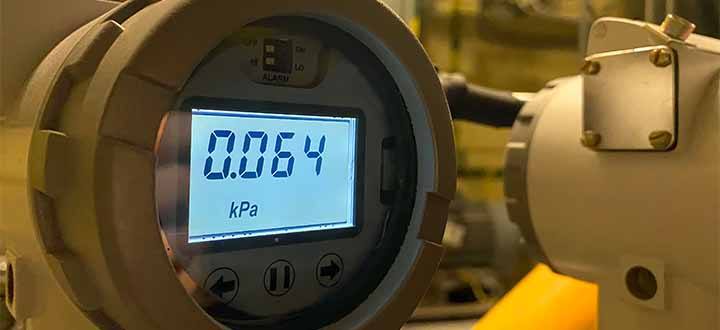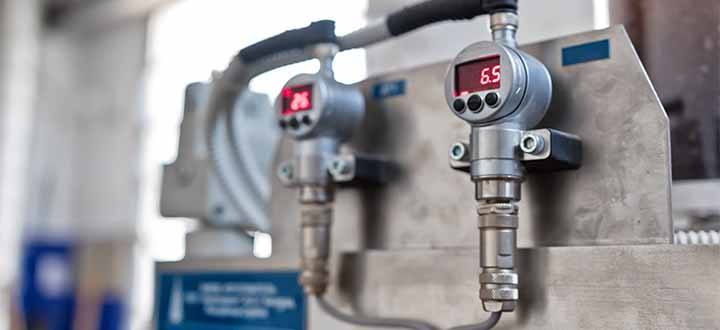The pressure control has the task of maintaining a certain setpoint pressure. This is achieved, for example, by an automatic pump control with a connected pressure sensor. Constant pressures are just as important for the water supply in general as they are for saving energy.
- Pressure sensor
- Piezoresistive pressure sensor
- Piezoelectric pressure sensor
- Capacitive pressure sensor

Pressure sensor
The actual pressure must be measured with a pressure sensor in order to regulate the pressure to a specific target pressure.
There are various ways to measure pressure. To make pressure electronically detectable, the force acting on a diaphragm is usually determined via its deflection.
Piezoresistive pressure sensor
This type of sensor uses the piezoresistive effect. If a compressive or tensile force is exerted on a piezoresistive (semiconductor) material, for example in the form of a strain gauge, the electrical resistance of the material changes.
For use as a pressure sensor, a membrane on the back is coated with the sensor material. When the diaphragm is deflected, the material is stretched and the resulting change in resistance is measured.
The temperature dependence of the resistors must be taken into account. It is technically compensated by a differential-forming circuit so that it has no influence on the measurement quality.
The advantages of the piezoresistive pressure sensor are its high sensitivity and measuring accuracy, which, in combination with its very compact design, makes it ideal for pressure control in finely tuned systems.
Piezoelectric pressure sensor
This type of sensor uses the piezoelectric effect. If a piezoceramic material is deformed by pressure, an electrical voltage is generated above it due to charge displacement.

For use as a pressure sensor, a piezoceramic crystal is placed on a solid base and covered with a membrane so that the crystal is centrally loaded when the membrane is deflected.
Since unavoidable leakage currents, mainly due to the voltage measurement, ensure that the voltage across the crystal is reduced over time, this type of sensor is only suitable for measuring the magnitude of dynamic pressure changes, but not for measuring static pressures.
Capacitive pressure sensor
A capacitive sensor is based on the principle that the electrical capacitance of a plate capacitor can be influenced in the following way:
- Change in the effective plate area due to displacement of the plates (e.g. variable capacitor)
- Change in the plate spacing, for example due to the deformation of one of the plates
- Change in capacitance due to the presence of a dielectric or conductive material
For use as a pressure sensor for pressure control, the side of a ceramic diaphragm facing away from the pressure is metallically coated so that, together with a metallic plate underneath, it forms a plate capacitor whose capacitance changes when the diaphragm is deflected.
The advantages are the simple and robust design and the temperature stability. Capacitive pressure sensors are also suitable for dynamic use.

